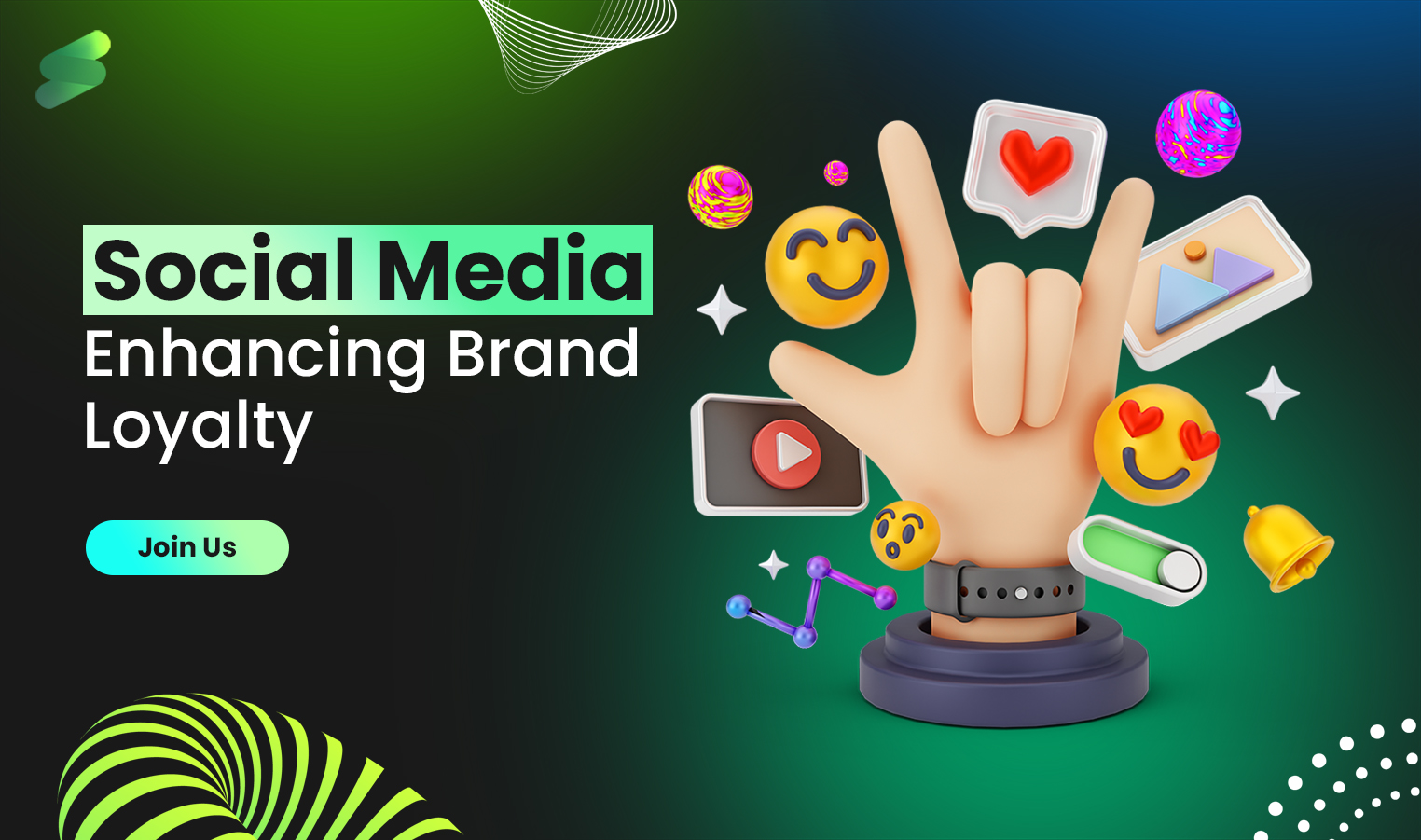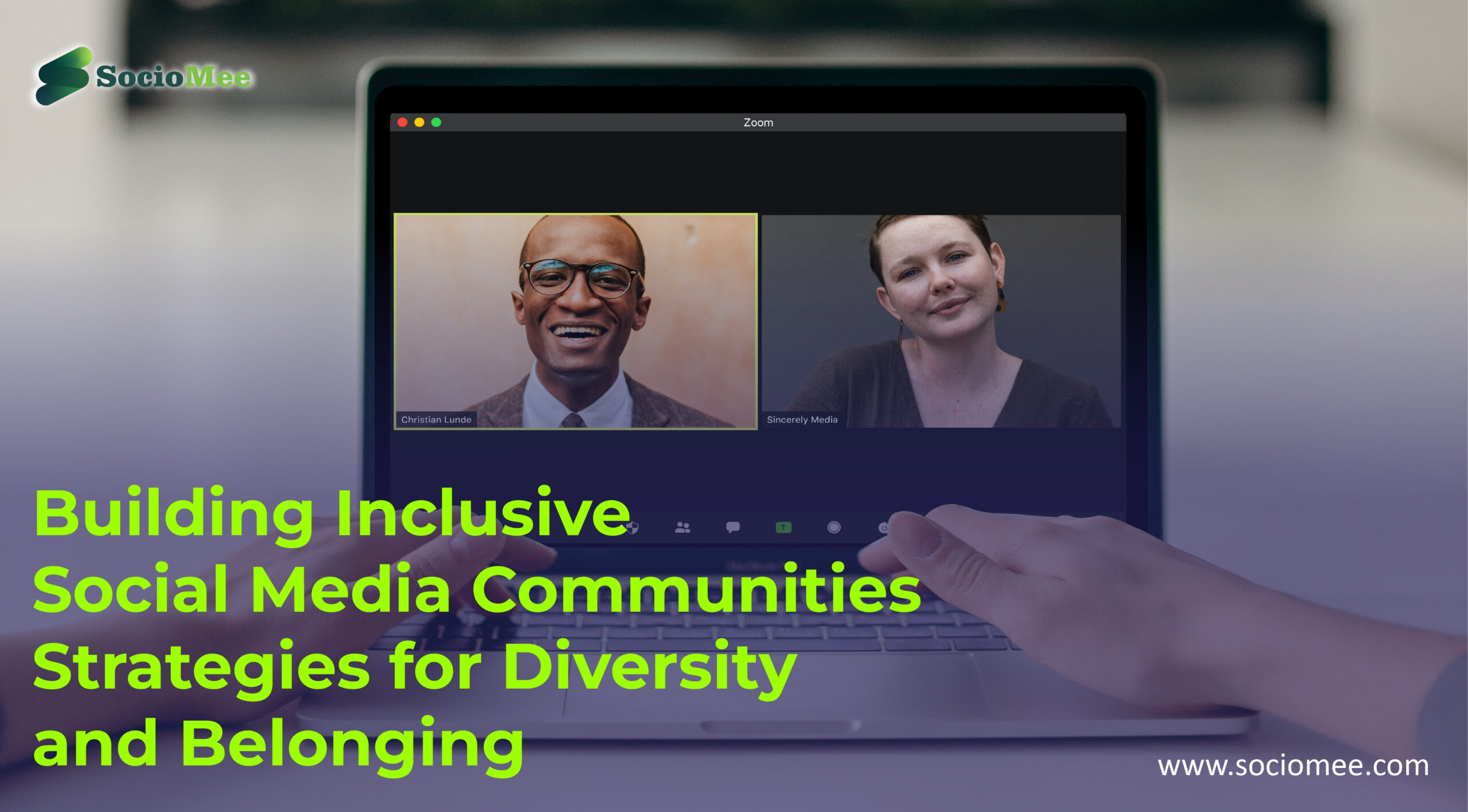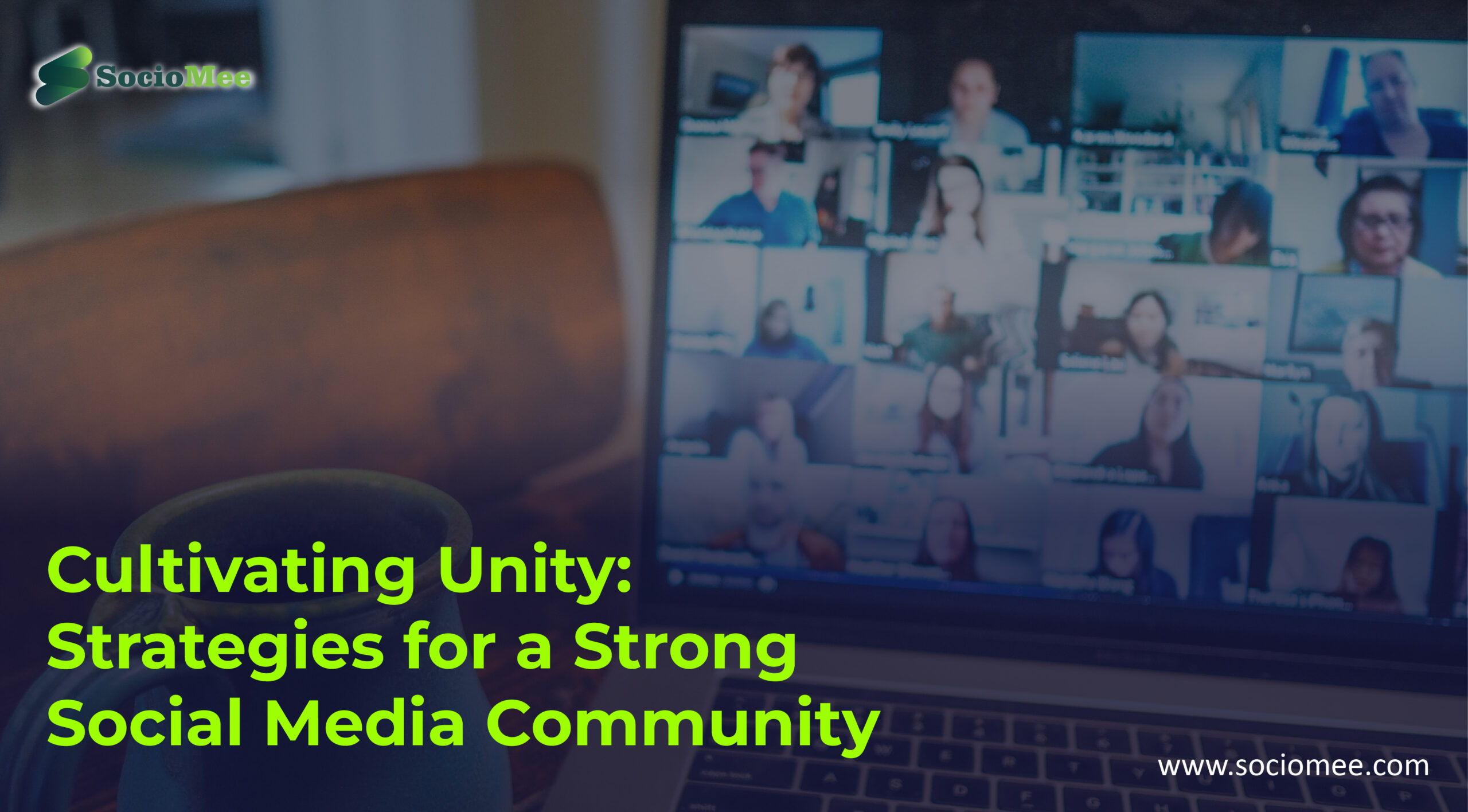As businesses become increasingly reliant on digital marketing methods and social media to reach their target customers, it is becoming increasingly important to understand the benefits of social media for enhancing brand loyalty and corporate image. Social media can be a powerful tool in building relationships with customers and creating a positive corporate image. Studies have shown that engaging with customers on social media can lead to increased customer loyalty and a more positive brand image. This article will explore the different ways in which businesses can use social media to foster customer loyalty, build relationships, and create a positive corporate image.
Additionally, the article will discuss how businesses can measure the success of their social media campaigns in terms of brand loyalty and corporate image.
#1. How Social Media Helps Create a Positive Brand Image
Social media is an important tool for businesses to create a positive brand image and engage with their target audience. Today, many businesses are using social media to reach customers, build relationships, and create a positive brand image. With the right strategies and tactics, social media can be a powerful tool to help businesses build a positive brand image.
- First, businesses should create a unified brand identity across all social media platforms. This means using the same logo, color scheme, and messaging across all platforms. This will make it easier for customers to recognize your brand and will create a consistency in the way your brand is presented. Additionally, businesses should also create content that reflects their brand values and resonates with their target audience. This could include blogs, videos, infographics, and other content types that are relevant to their industry and target audience.
- Second, businesses should use social media to interact with customers. This includes responding to customer queries, thanking customers for their business, and engaging in conversations about their brand. By engaging with customers, businesses can build trust and create a positive brand image. Additionally, businesses should also use social media to promote their products and services. This could include sharing information about new products or services, highlighting customer success stories, or offering discounts and promotions.
- Third, businesses should use social media to monitor their brand image. There are several tools available to help businesses track their brand’s online presence. These tools can help businesses identify areas where they need to improve their brand image and take action to address any negative feedback. Additionally, businesses can use these tools to identify trends and learn more about their customers.
- Finally, businesses should use social media to create and promote content that is tailored to their target audience. This could include creating and sharing content that is relevant to their industry, sharing stories about their brand, or creating content that is entertaining and engaging. By providing content that is tailored to your target audience, businesses can create a positive brand image and foster relationships with their customers.
In short, social media is a powerful tool that businesses can use to create a positive brand image and engage with their target audience. By creating a unified brand identity, interacting with customers, and creating content tailored to their target audience, businesses can use social media to build a positive brand image and create lasting relationships with their customers.
#2. How Social Media Can Help Increase Brand Loyalty
In today’s world, having a solid presence on social media is essential for any business’ success. Not only can social media help you reach a wider audience, but it can also be used to build brand loyalty. Studies have shown that customers who engage with a brand on social media are more likely to become loyal customers.
Here’s how social media can help increase brand loyalty.
- Engage with Your Customers: One of the best ways to build brand loyalty on social media is to engage with your customers. This means responding to their questions, comments, and reviews in a timely manner. It’s important to make sure you’re providing helpful answers and not just ignoring their comments. You should also take the time to thank customers for their loyalty, as this can go a long way in making them feel appreciated.
- Provide Valuable Content: Another great way to grow your brand loyalty on social media is to provide valuable content. This could include helpful articles, tutorials, or videos related to your industry. By offering content that your customers can use, you can show them that you’re invested in helping them. This can help build trust, which can ultimately lead to increased loyalty.
- Run Contests and Giveaways: Contests and giveaways are a great way to get your customers engaged and build brand loyalty. You could run a contest asking customers to share their favorite product or service from your brand or encouraging them to post photos of themselves using your product. You could also offer giveaways of products or discounts to customers who share your content. This can help create excitement and loyalty around your brand.
- Be Active and Consistent: It’s important to be active and consistent when it comes to your social media presence. This means posting regularly, responding to customers in a timely manner, and engaging with your followers. If you’re not consistently active on social media, customers may forget about your brand or become less loyal over time.
In today’s digital world, social media is an important part of any business’ strategy. It can be used to reach a wider audience, build brand loyalty, and increase customer engagement. From engaging with customers to providing valuable content, there are a number of ways to use social media to increase brand loyalty. By taking the time to implement a social media strategy, businesses can create loyal customers that will stay with them for the long-term.
Connect with new world
#3. How Social Media Can Help Increase Customer Engagement
With more than three billion people around the world using social media platforms, it’s no wonder why businesses are turning to social media to reach their target audience. However, simply having a presence on social media isn’t enough to get the desired results. To get the most out of social media, businesses must use it to engage customers and build relationships. Customer engagement is key to any successful business, and social media provides an invaluable tool to achieve this.
Here are some ways that businesses can use social media to increase customer engagement and create a more successful business.
- Make Use of Campaigns: Social media campaigns are an effective way to reach customers and build relationships. Businesses can create campaigns that are tailored to their target audience and then use them to engage customers. Businesses can use campaigns to promote specific products or services, increase brand awareness, or simply provide helpful information. By running campaigns on social media, businesses can reach customers more directly and create a more personalized experience.
- Respond to Customers: One of the benefits of using social media is that it allows businesses to interact with customers on a more personal level. Businesses can use social media to respond to customer feedback, answer questions, and provide support when needed. By responding to customers on social media, businesses can show that they are listening and are open to feedback.
- Engage with Content: Content is an important part of any social media strategy. Businesses should use content to engage with customers and provide them with useful information. Also by providing customers with interesting and relevant content, businesses can encourage them to interact with their brand. This can help to build relationships, increase brand awareness, and create a more positive customer experience.
- Utilize Social Media Advertising: Social media advertising is a great way to reach customers and increase engagement. Businesses can use tools such as SocioMee Ads to target specific audiences and deliver ads to them. Social media advertising can be used to promote products and services, increase brand awareness, and gain new customers. It can also be used to retarget existing customers and encourage them to engage with the brand.
- Make Use of Analytics: Analytics is an important tool for businesses to use when it comes to social media. Analytics can help businesses to better understand their customers and their behaviors. This can help them to create content that resonates with customers and to identify which campaigns are performing the best.
By using analytics, businesses can also get an insight into how customers are engaging with their brand on social media. This can help them to adjust their strategy and focus on activities that are driving the most engagement. Social media offers businesses a powerful tool to engage with customers and build relationships. By making use of campaigns, responding to customers, engaging with content, utilizing social media advertising, and utilizing analytics, businesses can increase customer engagement and create a more successful business.
#4. How to Use Social Media to Create a Positive Brand Narrative
Social media has become an essential tool for businesses to create a positive brand narrative. With the right strategies, businesses can build a reputation and create a loyal customer base.
Here are seven tips to help you use social media to create a positive brand narrative:
- Focus on Quality Content: Quality content is key when it comes to promoting your brand on social media. Share engaging and relevant content that is valuable to your target audience. This includes infographics, photos, videos, blog posts, and more. Focus on creating content that will be interesting and beneficial to your target audience, not just content that promotes your brand.
- Connect with Your Followers: Social media is all about relationships. Get to know your followers and build a relationship with them. Respond to their comments and questions, and be sure to thank them for their engagement. This will help you to create a positive brand narrative and show that you care about your followers.
- Promote Your Brand’s Values: Use social media to communicate your brand’s values. This could include featuring stories of how you’ve helped customers, giving back to the community, or making a difference in the world. This will help to create a positive brand narrative and show that your business is committed to making a difference.
- Humanize Your Brand: Social media is all about creating connections. Show the human side of your business by featuring stories of your staff and showing how you’re making an impact in the world. This will help to create a positive brand narrative and help to build trust with your followers.
- Monitor Your Social Media Presence: Monitor the conversations happening around your brand on social media. This will help you to identify any negative comments or conversations that may be happening and address them quickly and appropriately. This will help to create a positive brand narrative, as well as create a sense of trust and loyalty with your followers.
- Engage with Influencers: Influencers have the power to help shape public opinion about your brand. Building relationships with influencers can help to create a positive brand narrative and generate more leads for your business.
- Measure Your Results: Social media is a powerful tool for businesses, but it’s important to measure the effectiveness of your efforts. Use social media analytics tools to track your success and ensure that your efforts are paying off.
By using these tips, you can use social media to create a positive brand narrative and build trust with your followers. With the right strategies, you can create a loyal fan base and generate more leads for your business.
#5. Ways to Leverage Social Media Platforms to Increase Brand Loyalty
The world of marketing and advertising has changed drastically over the past few decades, with the rise of social media platforms becoming a major influence on how companies interact with their customers. Social media has become a powerful tool for businesses to increase brand loyalty and build relationships with their existing customers, while also reaching out to new ones.
Here are some ways to leverage social media platforms to increase brand loyalty.
- Create Engaging Content: Creating content that is interesting and engaging is key to keeping customers interested in your business. Posts that are interactive and encourage user engagement, such as polls, quizzes, and contests, can help to keep customers engaged and interested in your brand. Additionally, creating content that is relevant to your audience can help to build trust and loyalty with them.
- Offer Special Deals and Promotions: Everyone loves a good deal, and social media platforms can be used to offer special discounts and promotions. Offering exclusive deals and promotions to followers of your social media accounts can help to increase loyalty and attract new customers.
- Respond Quickly to Messages and Comments: Social media is a great way to communicate with customers and get feedback on your products and services. It is important to respond quickly to messages and comments, as this can show customers that you are listening to their concerns and taking them seriously.
- Encourage User-Generated Content: User-generated content is a great way to show customers that your brand is actively engaging with them. Encouraging customers to post about your products and services on social media can help to create a sense of loyalty and trust with your existing customers, while also helping to attract new ones.
- Develop an Engaging Community: Social media platforms are a great way to build a community of loyal customers. Creating engaging content and responding to messages and comments can help to build relationships with customers and create a sense of loyalty. Additionally, engaging with other brands and influencers in your industry can help to create a larger network of followers.
- Utilize Influencer Marketing: Influencer marketing can be a powerful tool for businesses to reach out to larger audiences and increase brand loyalty. Working with influencers who have an established following can help to increase awareness of your brand and build relationships with their followers.
- Monitor and Analyze Performance: It is important to monitor and analyze the performance of your social media campaigns in order to understand which strategies are working and which need to be adjusted. Utilizing analytics tools can help to track metrics such as engagement, reach, and conversions, and help you to optimize your campaigns for better results.
By leveraging social media platforms, businesses can build relationships with their customers, increase brand loyalty, and reach out to new customers. Creating engaging content, offering special deals and promotions, responding quickly to messages and comments, encouraging user-generated content, developing an engaging community, utilizing influencer marketing, and monitoring and analyzing performance can all help businesses to increase loyalty and build relationships with their customers.
Connect with new social community
#6. Strategies for Building a Loyal Following on Social Media Platform
Building a loyal following on social media can be a daunting task, but with the right strategies and tools, it can be done. Here are seven strategies you can use to build a loyal following on social media:
- Offer Quality Content: Quality content is the cornerstone of any successful social media strategy. You need to ensure that you’re consistently providing your audience with valuable, relevant, and interesting content that they can engage with. Quality content can come in the form of videos, blog posts, images, infographics, and more.
- Connect With Your Audience: It’s important to make sure that you’re engaging with your audience on a regular basis. Whether it’s responding to comments or answering questions, it’s important to make sure that you’re taking the time to connect with people on a more personal level.
- Just Be Consistent: Consistency is key when it comes to building a loyal following. You want to make sure that you’re providing content on a regular basis and that you’re engaging with your audience as often as possible.
- Run Contests and Giveaways: People love free stuff, and running contests and giveaways can be a great way to engage with your audience and attract new followers. Just make sure that you’re offering something that’s valuable to your audience and that you’re following the rules and regulations of the social media platform you’re using.
- Utilize Social Media Influencers: Influencers can be a great way to engage with your audience and spread the word about your brand. Reach out to influencers that have a following that aligns with your target audience and see if they’d be interested in collaborating with you.
- Leverage User-Generated Content: User-generated content is a great way to engage with your audience and build relationships with them. Encourage your followers to post content related to your brand and share it with your audience. You can also repost content from your followers to show that you value their input.
- Track Your Results: An essential component of any effective social media plan is tracking your results. To make necessary adjustments to your plans, you must be aware of what is and is not working.
By implementing these strategies, you should be able to build a loyal following on social media. It will take time and effort, but the rewards will be worth it in the end. Good luck!
#7. Best Practices for Building a Positive Reputation on Social Media Platform
People are increasingly relying on social media to learn more about the people, products, and services they use. As a result, having a positive reputation on these platforms is essential for any individual or business. Building a positive reputation on social media requires a well thought out strategy, as well as an understanding of best practices.
- The first step in building a positive reputation on social media is to create an effective profile. Your profile should accurately reflect your identity, as well as give users an idea of what you have to offer. Include a professional profile photo, a brief description of your background, and any relevant links to your website or other social media accounts. Additionally, be sure to fill out all the fields that are available, as this will make it easier for potential customers or followers to find you.
- The second step is to create engaging content. Posting regular updates, photos, and videos is one of the best ways to keep your followers engaged. Additionally, be sure to respond to comments and messages in a timely fashion. This will show that you are actively engaged with your followers and will help to build trust with them.
- The third step is to use strategic hashtags. Hashtags are a great way to reach a larger audience and to ensure that your posts are seen by the right people. When deciding which hashtags to use, research trending topics that are related to your industry and use them in your posts. Additionally, you can use hashtags to join conversations and engage with other users on the platform.
- The fourth step is to engage with other users and influencers. Take the time to interact with other users on the platform, such as liking, commenting, and sharing their content. Additionally, reach out to influencers in your industry to build relationships and potentially collaborate on content. This is a great way to get your name out there and to increase your visibility on the platform.
- The fifth step is to use analytics to track your progress. Many social media platforms offer analytics tools that can help you measure your performance. This can provide valuable insights into what type of content is performing best, as well as which strategies are most effective.
- Finally, be sure to maintain a consistent presence. Posting regularly and consistently will help you build a positive reputation and ensure that your followers are kept up to date. Additionally, make sure to post at the right times of day to maximize engagement and reach.
By following these best practices, you can build a positive reputation on social media and ensure that your brand is seen in the best possible light. With a bit of effort and patience, you can create a successful presence on these platforms and reap the rewards that come with it.
#8. The Benefits of Social Media for Influencer Marketing
Influencer marketing has become one of the most powerful tools in the digital marketing arsenal. It’s a way to reach a large and engaged audience quickly and inexpensively, and social media is key to its success. Social media has enabled influencer marketing to reach a much broader audience than ever before. By connecting with influencers on social media, marketers can target potential customers in an incredibly effective way. For example, if a brand is looking to reach young, urban professionals, it can target influencers who have an active presence among this demographic. Social media also provides a platform for brands to interact directly with influencers.
This allows them to build relationships with influencers, which can lead to more effective partnerships. By engaging with influencers on social media, brands are able to gain valuable insight into their target audience and create campaigns that are tailored to their needs. On top of that, social media provides a level of transparency that is beneficial for both brands and influencers. Brands can see how influencers are interacting with their content, and influencers can easily keep track of their performance. This helps ensure that both parties are getting the most out of their partnership. Social media also allows influencers to quickly and easily promote campaigns to their audiences. By utilizing the power of social media, influencers can boost brand awareness and reach a larger audience in a short amount of time. Finally, social media has made it much easier for marketers to measure the success of their influencer campaigns.
By tracking the performance of influencers on social media, marketers can get a better understanding of which campaigns are working and which are not. This helps marketers make more informed decisions about their influencer marketing strategy. Overall, social media has revolutionized the way we do influencer marketing. It has enabled brands to reach a much larger and more engaged audience in an incredibly effective way.
It has also given brands the ability to build relationships with influencers, gain valuable insight into their target audience, and measure the success of their campaigns. Social media has become an invaluable tool for those looking to make the most of their influencer marketing efforts.
#9. How to Leverage User-Generated Content to Increase Brand Loyalty
User-generated content (UGC) is a powerful tool for driving customer loyalty. Brands can leverage UGC to increase engagement and loyalty by giving customers a voice and allowing them to express their feelings about their products or services. UGC can be used to create a sense of community, build relationships, and increase customer loyalty.
First, it’s important to understand how UGC works. UGC is defined as any content created by consumers and shared on digital platforms. This could include reviews, ratings, comments, posts, images, videos, and other forms of content. It’s important to note that UGC is different from traditional marketing content, as it is not created by the brand itself. By leveraging UGC, brands can gain insights into how customers feel about their products or services and use that information to make improvements and build relationships. One of the most effective ways to leverage UGC is through social media.
Brands can encourage customers to share their experiences with their products or services on social media. This could include reviews, photos, videos, or any other type of content that highlights the customer’s experience. This allows customers to express their opinions and feelings about the product or service and gives the brand an opportunity to respond and engage with them. Brands can also use UGC in their advertising campaigns. By creating campaigns that feature UGC, brands can show their customers that they are listening to their feedback and are willing to act on it. Brands can also use UGC to create a sense of community and build relationships.
By responding to customers’ questions and comments, they can create a more personal connection and build trust. Finally, brands can use UGC to reward loyal customers. By recognizing and rewarding customers for their loyalty, brands can create a sense of loyalty and encourage customers to continue to purchase their products or services. This could include offering discounts or special offers to customers who share their experiences with their products or services. By leveraging UGC, brands can increase engagement and create a sense of loyalty. By giving customers a voice and allowing them to express their feelings about their products or services, brands can create a sense of community and build relationships.
They can also use UGC in their advertising campaigns and reward loyal customers. By using UGC, brands can increase customer loyalty and create a more positive customer experience.
Conclusion
In conclusion, social media provides a powerful platform for businesses to build brand loyalty and a positive corporate image. Social media allows businesses to create relationships with their customers and provide them with a more personalised experience. Customers also appreciate the convenience and immediacy of social media, which allows businesses to respond quickly to their customers’ needs and questions. Additionally, businesses can use social media to create a sense of community around their brand, which encourages customers to become more involved and engaged. Although businesses can use social media to promote positive values and establish a positive corporate image.
Overall, the use of social media can be an invaluable tool for building customer loyalty and a positive corporate image. By engaging with customers, creating a sense of community, and promoting positive values, businesses can create a strong and lasting relationship with their customers, which can ultimately lead to increased brand loyalty and a positive corporate image.









